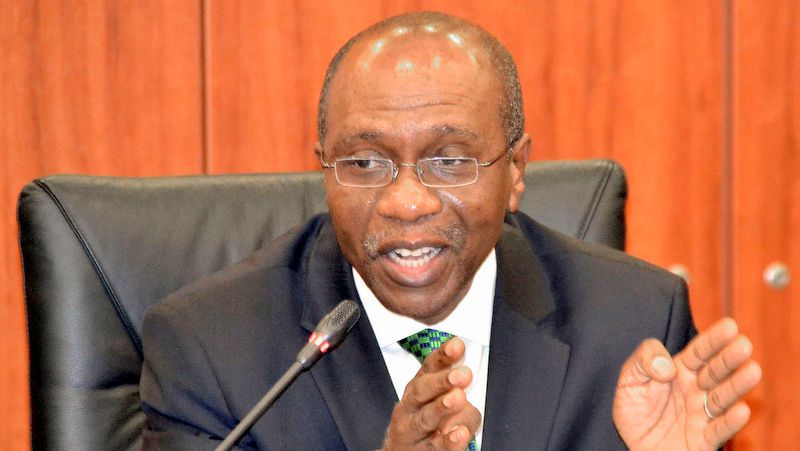The banking system continued to be resilient with major financial soundness indicators comparing favourably with the prudential thresholds as of the end of October 2022.
The Central Bank of Nigeria disclosed this in statements on monetary policies.
The Governor, CBN, Godwin Emefiele, said there was observed growth which was attributable to the substantial overshoot of domestic claims above programmed benchmark and importantly reflected the sustained growth of banking system credits to the private sector, consistent with the CBN policy to finance high-impact sectors.
He said, “Despite rising private sector credits and elevated uncertainties, the banking system remained resilient and stable as NPL ratio (4.81 per cent), liquidity ratio (40.14 per cent) and CAR (13.39 per cent), outperformed their prudential limits. In order to insulate our economy from adverse external developments, it remains imperative to fortify our economic base by de-risking the productive sector and diversifying completely.
“This is especially as frozen oil receipt impedes the FX market, shrinking external reserves from $37.39bn in September to $36.87bn in October, and abetting exchange rate pressures.”
A member of the MPC, Adeola Adenikinju, said the various Financial Soundness Indicators showed that the banking systems remained safe, sound, and resilient.
All the FSIs were within the prudential requirements and compared well with comparator countries, he said.
He said, “All measures of industry aggregates: assets, deposits and credit rose year on year. Total assets of the banking industry grew by N12.37tn between end-October 2021 and 2022.
“Similarly, industry credit increased by N5.32tn over the same period. In addition, total industry deposits rose by N6.92tn between end-October 2021 and 2022. In October 2022, a total of 125,305 new credits valued at N767.06bn were granted to various customers. There was marginal increase in lending rates in the industry in response to recent measures by the CBN.”
An MPC member, Robert Asogwa, said the domestic financial sector was still resilient as of October, except for observed volatilities in the stock market.
He said, “The banking sector indicators are robust, similar to the position at the last MPC meeting, with non-performing loans ratio declining further from 4.9 per cent to 4.8 per cent in October 2022 and with further increases in total assets.
“Of particular interest is the addition of above one N1tn in total industry deposits between September and October 2022. Of marginal concern, is the consistent decline in the capital adequacy ratio of the banks between June and October 2022, but this is attributed to increases in total risk-weighted assets, which for some time has been higher than the total qualifying capital.
An MPC member, Kingsley Obiora, said the banking system remained sound, safe and resilient to headwinds. The industry Non-Performing Loan ratio was 4.8 per cent at the end of October 2022, compared with 5.3 per cent at the end of the corresponding period of 2021, which was below the prudential maximum of 5.0 per cent.
He said, “The decline in NPLs was attributable to write-offs, restructuring of facilities, Global Standing Instruction and sound credit risk management by banks. Total assets of the banking industry showed an increase of N12.37tn or 21.58 per cent from N57.30 per cent in October 2021 to N69.67tn in October 2022, driven largely by balances with CBN/banks, investments, and credit expansion to the real sector.
“As a result, the total flow of credit to the economy increased from N23.49tn in October 2021 to N28.81tn in October 2022, representing an increase of 22.66 per cent to the key sectors of the economy, including oil and gas, manufacturing, general, governments and commerce.”
According to an MPC member, Folashodun Shonubi, the banking system remained resilient so far in 2022, even as it continued to grapple with the effects of a challenging macroeconomic environment on businesses.
He said industry non-performing loan ratio was 4.8 per cent in October 2022 below the 5.0 per cent threshold, while industry liquidity ratio was 40.1 per cent, above the 30.0 per cent minimum level.
He said, “Of note is the sustained growth in total industry deposits, credits, and assets, reflecting positive impact of various measures by the bank. Industry capital adequacy, though lower at 13.4 per cent, was above the 10.0 per cent prudential minimum.
“Significant rise in domestic claims on private sector and the government has however pushed annualised growth of major monetary aggregate slightly above the benchmark for fiscal 2022, highlighting monetary aspect of the drivers of inflationary pressure.”
SOURCE: PUNCH


